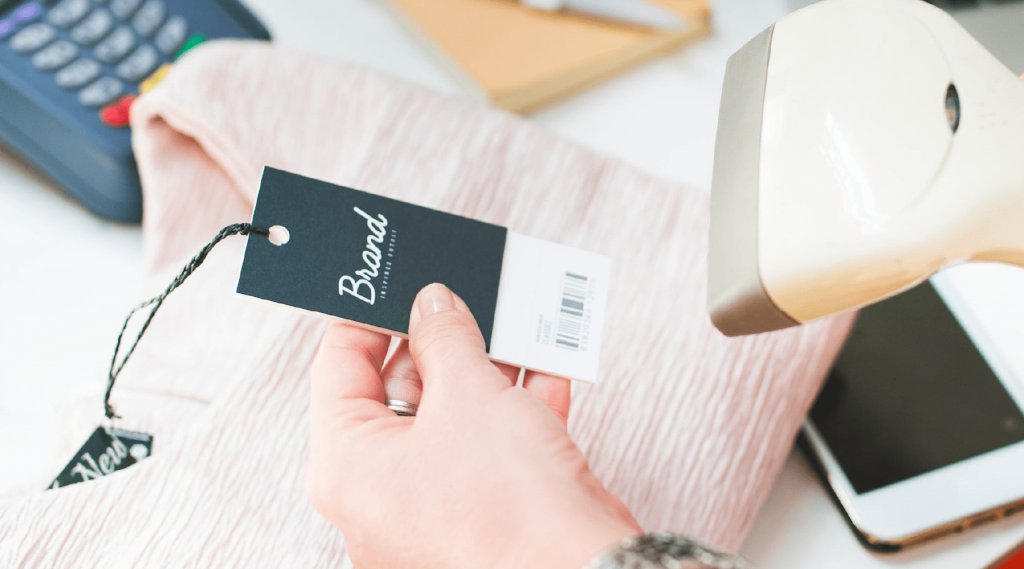The Difference Between Cross-Selling and Upselling
Cross-selling and upselling are techniques that focus on providing added value to customers, as opposed to limiting the sale to only the product the customer is interested in. As a business owner, your goal when cross-selling and upselling is to increase the amount the customer spends on your products. This is done by introducing additional items that your customer may not have thought of previously.
Both cross-selling and upselling are types of suggestive selling. It is recommended that you train your sales team in cross-selling and upselling in order to maximize sales conversions and increase your profit. If done correctly, cross-selling and upselling can also result in a higher level of customer satisfaction.
Cross-selling definition
Cross-selling is a sales technique that identifies related and complementary products to the items being purchased. Cross-selling involves presenting customers with products that will make the use of the item being purchased easier or more convenient. Cross-selling is used across many different industries, for example, retail, banks, and restaurants. Business owners can use the cross-selling sales techniques in store and online.
The meaning of upselling
Upselling is another sales technique that encourages customers to spend more by purchasing an upgraded, higher-end or premium version of a product. Upselling involves convincing the customer to buy a better version of their existing item. Upselling is used in various industries, including retail, automotive and hospitality.
Businesses can use both the cross-sell and upsell techniques to grow their profits. The specific technique used will depend on your products and your customers. Here is a further explanation of the cross-sell and the upsell sale techniques. This should help you determine if and when you should use these powerful methods to increase your sales.
Cross-selling

Advantages of cross-selling
The cross-selling sales technique has the following advantages:
Additional sales – The point of cross-selling is to encourage a customer who has already shown interest in buying your products to buy more. This gives your business the advantage of introducing new products to customers who, without prompting, may choose to make repeat purchases of the cross-sell items in the future.
Cost management – It is cheaper to manage an order for several products as opposed to just one order. This is especially the case with e-commerce and businesses that accept credit cards as they could be liable to pay handling fees.
Customer loyalty – Pre-empting what your customers need and offering it to them will increase their level of satisfaction with your business. Adding value with cross-selling could translate to an increase in loyalty to your business.
Customer knowledge – You can analyze your customer’s behavior by using your point of sale’s analytics when cross-selling. This data can help to inform your sales strategy and assist in the creation of a more accurate budget.>
Introduce new inventory – Cross-selling can be used to introduce products that some of your customers are unaware of. You can suggest your customers buy some of your more unpopular products to get rid of dead stock.
User experience – When your sales team cross-sells to customers, they need to interact and explain why the product will be a good addition to the sale. Any positive interaction a customer has with your business will improve their experience and make it more likely that they will be repeat customers
**Best practices for cross-selling
 **
**
In order for cross-selling to be effective, you must train your staff on when and how to use this technique.
The following are best practices when using the cross-selling sales technique:
>Suggest items that are required for the item to be operated properly, for example, a stand for an iPad kiosk.
Recommend items that increase the comfort or enhance the look of products, for instance, an insole for running shoes and a hat for a wedding outfit.
Place related products in a bundle so your customer does not have to search separately for the required accessories.
Apply a discount on your bundled items to encourage the customer to make a sale on the spot.
Offer a demonstration of the bundled products to give your customers a clear idea of how everything works together.
Cross-selling examples
Cross-selling can be applied to almost any product and can be offered online and in-store. It is reported that Amazon credits the cross-selling sales technique to at least 35% of its sales.Amazon uses suggestive selling with its “customers who bought this item also bought” and “frequently bought together” features to encourage customers to spend more.
Businesses of any size can use cross-selling to increase sales. Here are some examples of how cross-selling can be used in different industries:
A barista at a coffee shopasks a customer, “would you like a donut with your coffee?”
A salesperson at an electronics retailer recommends a memory card to a customer who is buying a camera.
A sales associate in a clothing store suggests shoes and a bag to match a dress.
A car salesman recommends leather seats to the customer when buying a new car.
Upselling

The aim of using the upselling sales technique is to persuade your customer to buy a better and more expensive version of a product. You can provide different options and explain why it is better than the product the customer has chosen. Upsells can be applied to both physical and digital products. For example, software providers have different levels of access, such as a basic and a pro version.
Advantages of upselling
The primary advantage of upselling is to bring more money into your business. However, just like cross-selling, using the upselling sales technique also has additional benefits, including:
Deeper customer relationships – Upselling helps your customers get the best product for their needs. You should demonstrate how customers will benefit from buying a more expensive product. The job of a salesperson is to show that the additional price is low in comparison to the benefits that will be gained. When upselling is done correctly, your customer will feel like you are looking out for them and will result in a deeper appreciation of your business.
Increased customer lifetime value (CLV) – Your CLV is the net profit contribution your customers make to your company over time. Upselling helps you gain a higher CLV, which means that each of your customers buys more without you spending money on marketing or promotion for new business.
More efficient– Upselling to existing customers is easier and cheaper than finding new customers. Customers are more willing to buy from a business they know and trust. Upselling helps you to focus on improving your current customers’ experience so you can sell them higher-end products.
Upselling best practices

You only gain the maximum benefit from upselling when it is done with the intention of benefiting both you and your customer.
Here are some best practices when using upselling as a sales technique:
Avoid being aggressive or pushy when trying to make the sale.
Accept when a customer says they are not interested in the upsell.
Do not offer products that are considerably more expensive than the item the customer is buying.
Concentrate on how you can add value to help meet the customers’ needs.
Make side-by-side comparisons to practically demonstrate to the customers how your suggested product is more superior.
Offer a discount that is only available in the moment so the customer can make the upsell purchase immediately.
Spend time educating the customer so they are aware of what they will miss out on if they refuse the upsell offer.
Always look for opportunities to upsell your products.
Examples of upselling
There are examples of upselling in every industry. The following are common examples of upselling:
A restaurant server asks diners whether they want to add steak to their salad for an extra cost.
An automotive salesman recommends that the buyer purchase a more expensive version of the vehicle because it is faster and has alloy wheels.
An airline operative at the check-in desk gives passengers the option to upgrade their coach ticket to business-class for an additional fee.
An online software provider offers customers an upgrade from their basic to their pro plan for an additional $10 per month. This upgrade comes with advanced features and live help and support.
Cross-selling and upselling techniques

In most cases, the same techniques apply to cross-selling and upselling. The following techniques can be used when cross-selling and upselling your products:
Show customers only a select amount of choices – Avoid giving your customers too many options when cross-selling and upselling. Showing too many products at the same time can lead to confusion, which may result in the customer abandoning the sale.
Keep products relevant – Your suggestions should be aligned with what your customer is already purchasing. Presenting products that do not match what your customer is buying will cause irritation as it may appear that you are only after a sale and are not concerned about their needs. The rule of thumb when cross-selling and upselling is that suggested products should complement the existing item and meet the customer’s needs.
Give the option to separate bundles – Bundling products normally work well when cross-selling. However, it is good practice to provide the customer with a choice to buy the bundled items separately.
Emphasize features over price – It is important to focus on the features of a product, especially when upselling. You need to convince your customer that the additional features are worth spending extra on. This approach works well in the hotel industry where hoteliers focus on the features of an upgraded room as opposed to how much extra it will cost per night.
Businesses should take every opportunity to cross-sell and upsell. You can determine the value of these sales techniques by calculating the difference adding a specific percentage (say 10%) will make to your business. Take inspiration from fast food restaurants that take every opportunity to use both the cross-selling and upselling sales technique. This approach is adopted by every employee as it forms part of their training. Fast food establishments make cross-selling and upselling easy because they recognize that it adds value to their customers and increases their bottom line.
Take the opportunity to review your products and train your staff to recommend different items as a way of providing great customer service. In terms of e-commerce, learn from Amazon and recommend relevant products when customers place an item in the shopping cart. Suggestive selling should be a consistent technique in your business to boost your sales and to keep your customers happy.
If you decide to implement cross-selling and upselling as a sales generating technique, consider using a tool to help protect your profits from being wasted on inefficient staff management. Deputy provides you with the functionality to efficiently manage your workforce and to save on costs which can originate from mistakes in staff scheduling. To discover how Deputy works to strengthen your business, click on the button below to begin your free trial.

